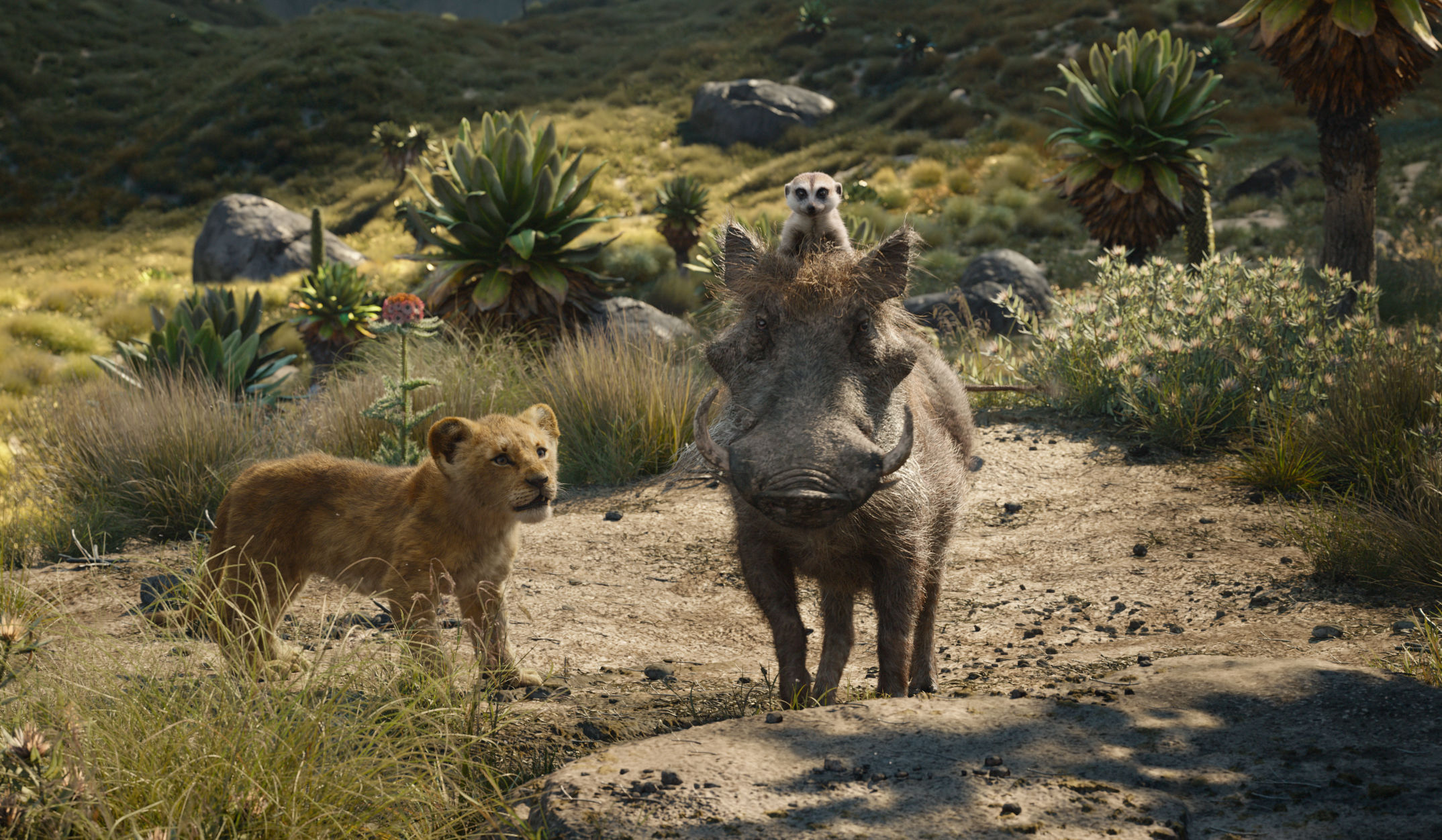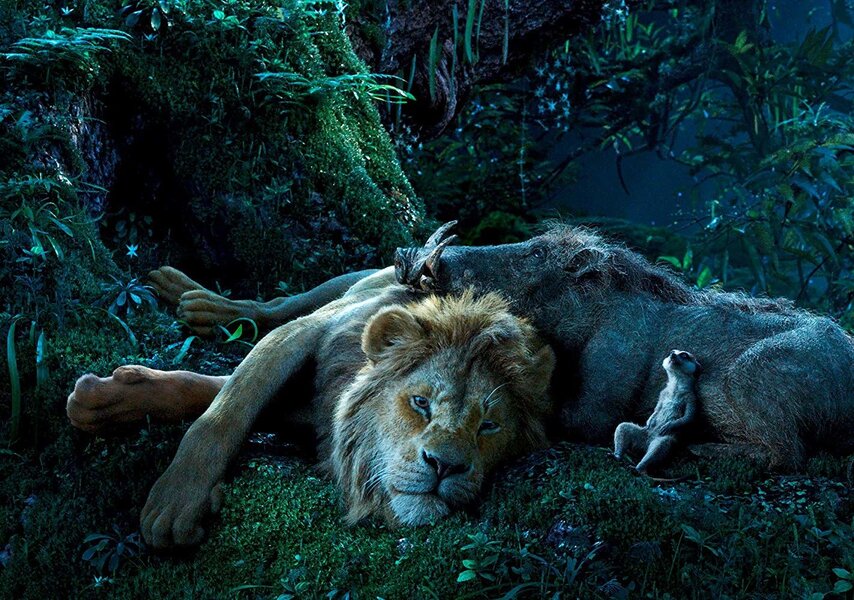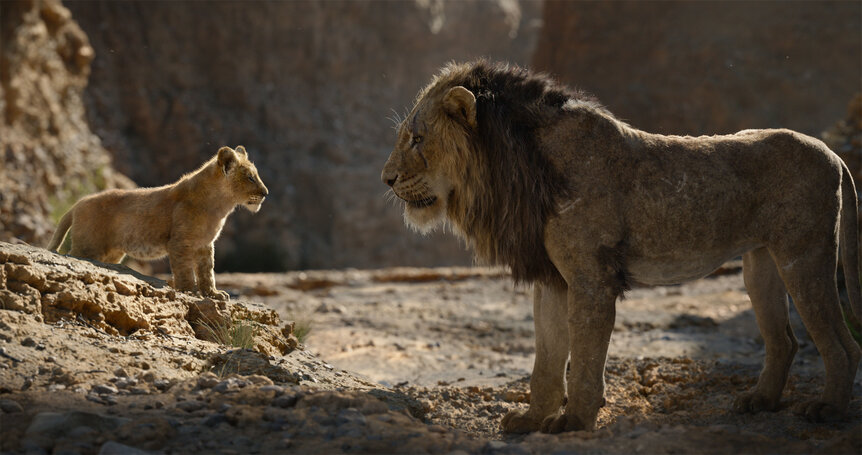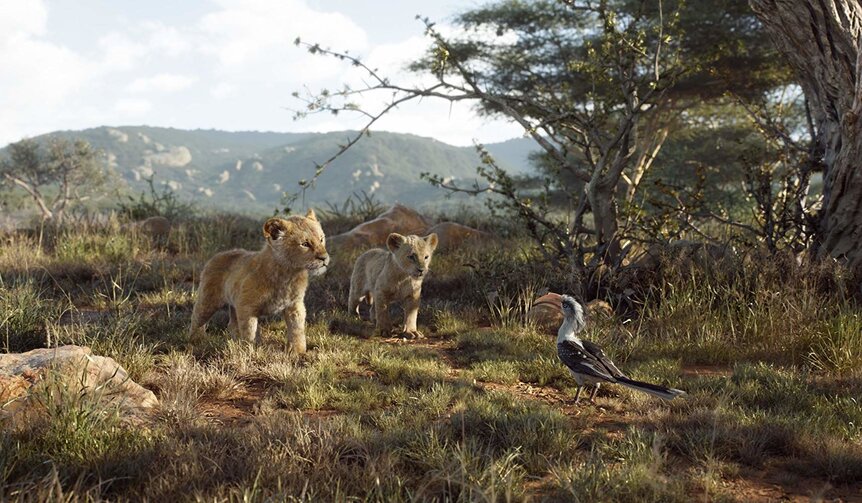Create a free profile to get unlimited access to exclusive videos, sweepstakes, and more!
The key to The Lion King's visuals? Seth Rogen and Billy Eichner's eyes, obviously

When you hear that thousands of visual effects artists worked on a film like the Jon Favreau-directed The Lion King, it's hard to really understand the scale of that. But one way to look at it, as VFX Supervisor Elliot Newman points out to SYFY WIRE, is this: "There was a whole team dedicated just to the hair on the whole movie."
As Newman says, "everyone has their specific areas of skill and specialization, and that's really what it boils down to. We use the computer and these tools to help facilitate it, but every frame of the movie is handcrafted."
In recreating the 1994 animated classic for a new era, the Disney visual effects team, including Newman, VFX Supervisor Rob Legato, and MPC VFX Supervisor Andy Jones, had a lot of resources but also a lot of restrictions. The limitations included the fact that for animal welfare reasons, they were limited in the ways they could interact with real-life lions, meerkats, warthogs, and more.
Fortunately, there was one resource they could use: the actors voicing these roles, including Donald Glover, Seth Rogen, and Billy Eichner. Favreau's comedy background led him to encourage improvisation among the cast, and the artists were able to film those sessions and use the footage to help guide their approach to the characters.
How exactly did that work, and what specifically did they get from watching the actors perform? The team explains below, as well as reveals why, exactly, this version of Pumbaa is a lot hairier than his animated warthog predecessor.
What went into bringing an improvisational feel to many of the scenes, especially Timon and Pumbaa's interactions?
Andy Jones: We filmed a black box theater with Billy Eichner and Seth Rogen and a few other actors as well. [Favreau] wanted to just try to get as much spontaneity in the movie as possible, and he knew that those two comedic actors can play off each other really well. We were able to capture that and edit together scenes that really were fun. And then the animators would look at that.
Also, we shot that to try to get eye contact patterns. We knew we weren't going to animate Pumbaa to move exactly like Seth Rogen — we didn't want him crawling around on the floor. But we would pull pieces of his eye contact patterns when he looked at Billy and when they didn't, and we'd use that in Pumbaa.
With the meerkat, it was about taking what's funny and cute about real meerkats, and what's cute and funny about Billy Eichner's timing, and trying to fit those two together. And it was a fun challenge and fun puzzle — the animators really enjoyed it.
Do you have any favorite moments that came out of the improv, that you didn't expect to be a part of the film?
Jones: For me, it was when they first find the cub in the desert and those little moments of how they interact. Even though it was a beat similar to the original film, and we did stay with that beat, Billy and Seth really brought something different to it, and the timing of it was a lot of fun.
Robert Legato: That scene is capturing what Billy and Seth do really well together. It's a really refreshing moment in the movie, because we went from a really dark thing to the lightness, and they delivered.
Why is eye contact something you were looking for specifically in those performances?
Jones: Because an actor makes eye contact based on choices they're making when they're acting, whether they're engaging with the person or not. That's a big part of it. Jon, being a comedic actor, really dives into that as well, so he gives the animation really good notes. That's where I think he sings. You know, as a director, he's really specific about even the slightest timing in a comedic spot, and he'll really detail that out and get it right. That's why I love working with him — he's good with all acting, and emotion in general, but he really dialed into the comedy of it. Seth and Billy he really pushed.
The eye contact is obviously harder with characters that have eyes on the sides of their heads — to get direct eye contact is tricky. Especially Zazu. We don't talk about Zazu much, but he was a tricky character, just because birds never really look straight down their beaks.
In terms of Pumbaa specifically as a character, how much did you lean into balancing him as a cute character versus realistic?
Jones: Jon pushed the warthog to be as not-cute as possible. He wanted the realism of real warthogs — all the hair.
Legato: They're crazy, wild-looking animals.
Jones: He said, let's lean into that because it makes it funnier.
Elliot Newman: A lot of it's down to the performance as well. Some of these characters will probably stay closer to a representation of an actual animal in the environment. But a character like Scar had to look a certain way. Mufasa had to look a certain way. So there's design aspects to all of the animals, and that's closely paired with how you animate them. Getting that marriage correct is really important.
When we were developing the characters, before we finished each character, we'd actually put them through an animation cycle of facial performance test, walk cycles, little performance studies, to see if the essence of the character was there. And if it isn't, maybe there's a change that was needed.
How do you feel the film would have been different if you had used motion capture?
Legato: It wouldn't have been as good. We discovered on The Jungle Book that even retargeting something to try to make that work — it really distorts the original performance. The best thing is to do the scene as humans, see what it feels like, extract the human moments, and then convert it to a rig that very specifically only moves the way that that designed animal moves in real life.
Jones: And your animators, great animators, will translate the performance and the behavior into what the animal should be.
Legato: It almost sounds like motion capture would be a direct translation. It's not, really. It gets distorted.
In addition, you weren't able to scan any actual animals?
Legato: We weren't allowed to do it. Disney is very conscious of that. We could go to Animal Kingdom, where they're in a natural habitat or photograph them. But we could not try to encourage them to do one thing or another. The only way we could actually pull off this movie is to do it the way that we did it.
Newman: Yes, one of the things that Jon said early on was that he didn't want to have any animal scans. The goal was to produce something that makes you believe you were looking at a real animal, and from Jon's direction, we didn't want to have to put any animal through any process to generate the reference information we needed. And so a lot of the reference we captured was candid stuff, like we went to Kenya and we photographed at a distance.
Jones: Because now that we can do it [with visual effects], you don't need to do the other thing. If you have talented people, animal behavior can be done without inhumanely treating animals. Now, if we could do that with people ...





























